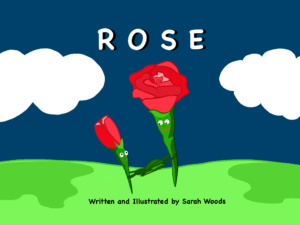We are delighted to share this guest blog from Anne Marie Tymlin.
Why use books?
Books can be extremely helpful when managing grief with children. Story allows a safe distance to explore the topic of death and loss. The familiarity of the story structure is comforting to a child. They may identify with the story characters and themes, allowing them to feel secure and understood. I would like to recommend two books that often appeal to young children who have been bereaved. Both stories are beautifully illustrated, and they can be used in a variety of ways. They can be read at home by a caregiver or used in a school setting with a particular child or a group of children. Some children may prefer to read these books independently and perhaps discuss their responses when they feel ready.
Tear Soup by Pat Schwiebert and Chuck DeKlyen
(available on Amazon)
This story begins with a wise woman called Grandy who has suffered a great loss in her life, which is never named. Pops, her husband is also suffering, but they respond in different ways. Grandy’s way is to make some “Tear Soup” which she knows will help her to cope. She first tasted this homemade soup several years ago when her friend made it from scratch to help her cope after the friend’s child died. Grandy understands that people are so busy it is easier to open a tin or buy ready-made soup, but the taste is never quite the same as your own homemade one. It was so flavoursome she could not imagine that quicker was better ever again. We are encouraged through the story and the graphics to pick a suitable pot to make it in, from a tiny pot called “not fair” to a very large pot called “more than I can bear”. Even the recipe books are labelled with titles including “near-death experience”, "divorce”, “suicide”, “loss of pet”, and “retirement”.

Each page is a description of the grieving process. We are encouraged to wear an apron because it can get messy. Grandy even tells us the safest places to cry where no one can see her. My experience tells me the shower and the car are the two places people cry when they are usually alone. This can be a time when friends and family feel overwhelmed that they cannot help to stop the tears.
Grandy continues her search for ingredients to perfect the soup as in the early stages it tastes bitter, but that is how she feels. As she continues to add precious memories to the soup, she feels tired and fed up that the world is continuing as if nothing happened. Some well-meaning friends bring her wine, flowers, even chocolate, but nothing she wants to add to the soup. No one wants to drink the soup with her as they either do not have the time or they want to avoid seeing her in pain. Only one good friend accompanies her, and they share the soup. They add comfort food to it and go for walks and talks, and Grandy does not have to worry about how she looks or sounds.
Another visitor, Mrs. Cries-a-lot, who has been making tear soup for years, calls in and corrects Grandy on her recipe and tells her what she thinks should be added. Poor Grandy’s spiritual faith is shaken, and she questions God’s intentions and even gets mad with him. Others begin to question the length of time the soup is taking, and this makes her mad as hell. Poor Pops just keeps going along, eating his soup alone. Grandy invites others who have been making tear soup too to meet up and they exchange recipes and stories of the type of cooks they were. They support each other unconditionally.

How To Use the Story
Children respond to the story when you can tell it in your own words, allowing them to identify with what is shown in the pictures. We can encourage them to discuss this and the reasons why they might have to make “Tear Soup”. I encourage the children to choose the pot that suits them, and they can draw or write about the ingredients and put them in the pot. All the while they may be identifying parallels between Grandy’s story and their own.
The last five pages are filled with Grandy’s cooking tips. These tips cover the grieving process so well. They are filled with advice about what grief is and how each loss can impact us in so many ways. The most important message is that the objective of grief is not to get over the loss but to get through the loss. There is a beautiful and believable ending, which I will not spoil as you might get to read it for yourself.
Rose by Sarah Woods
(Available from https://www.sarahwoods.net/books)
The author's message reads:

This book may have been written to accompany children on their bereavement journey, but it covers a lot more than that. Beautifully illustrated nature scenes accompany the narrative, written in rhyme, about a group of flowers growing together in their bed and led by Rose, the eldest and the wisest of the bunch.
It shows the relationship between the youngest flower named Bud and describes how strong the bond is between Bud and Rose. Rose teaches him the circle of flowers, about life and its ups and downs. Her mantra for him reads “learn and grow, every day, so something good can come your way”.

Through metaphor we learn that ups and downs are part of life, we learn to distinguish what is false and what is real, and we learn to have faith that our positive attitude will build our resilience. Rose explains how the flowers will die and that this is normal as it’s Mother Nature’s call, but also that those who have died will be around all the time when we hold them in our hearts.
The author talks about adverse weather and how we should remember it will not stay long and that the leaves on the stalk of the flower will keep Bud safe and protected during the difficult times. Children are guided through the rain until the rainbow appears. They are encouraged to see those who are no longer with them in the colours of the rainbow. We learn about the need for rain, sun, and clouds in new growth. The bees and butterflies in the illustrations provide great openings for children to discuss the meaning of life and our role in nature too.

The reader is encouraged by Bud’s openness to express his sadness through crying and yearning for Rose. This is a vital part of a child’s journey through any loss, including separation, divorce, homelessness, and all the other losses besides death that children face today. The reader is allowed to see how life is full of ups and downs and encouraged to appreciate that each day will bring something new that makes you YOU.
How To Use the Story
There is so much scope in this book for exploring sadness and loss before and after the event. There is plenty of space for a child to develop their own artwork, poetry, and songs to express what they see and feel regarding the insecurity when their world becomes unstable.
I like this book because it has a hidden depth and would be great for children to keep handy and refer to as they need and for professionals to use therapeutically and creatively.
Bio:
Anne Marie Tymlin is a Bereavement Specialist and Creative Arts Therapist who holds an M.A. in both Drama and Dramatherapy and an M.Sc in Bereavement Studies. Over the years she has supported hundreds of children and families to resolve their feelings around issues such as family grief and loss. She has also worked as an eTutor facilitating teacher CPD at Anokha Learning. She regularly hosts workshops in person and online on topics such as bereavement, self-care, personal development, and mindful approaches to relaxation and stress management.

